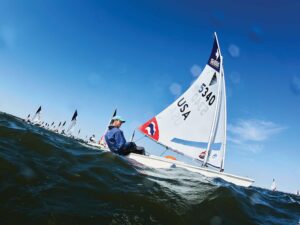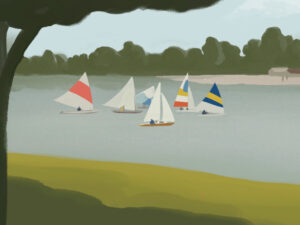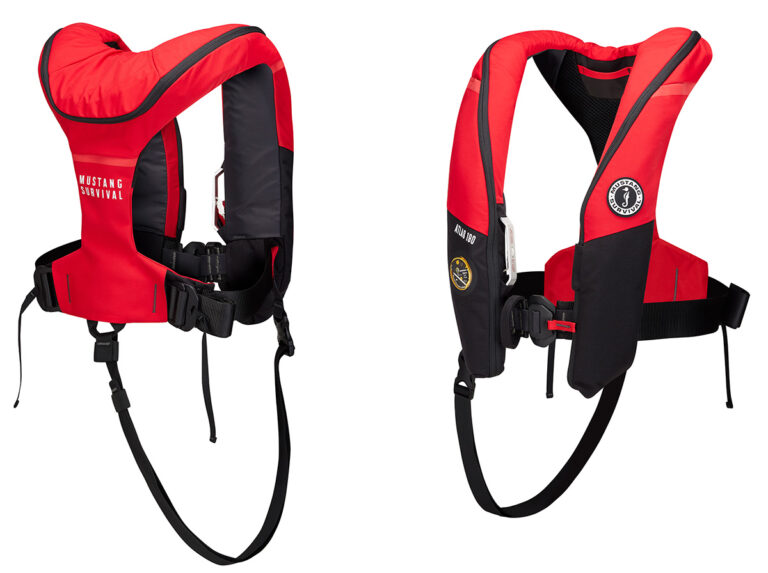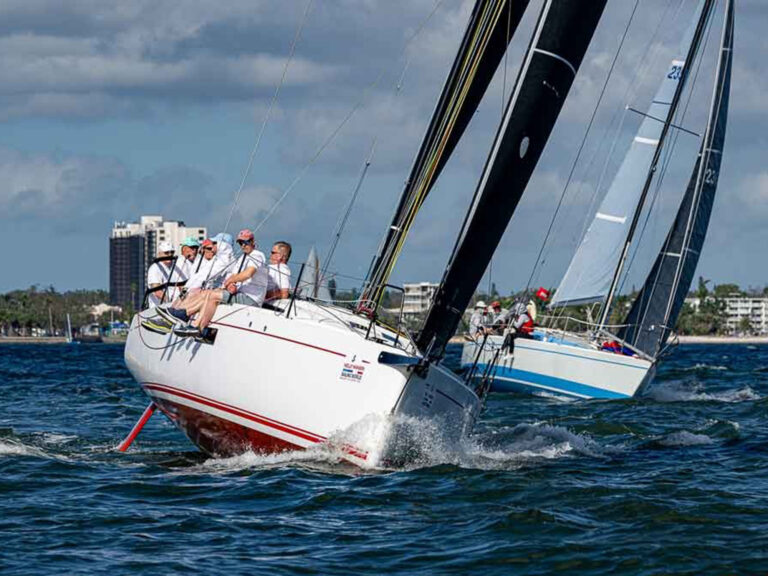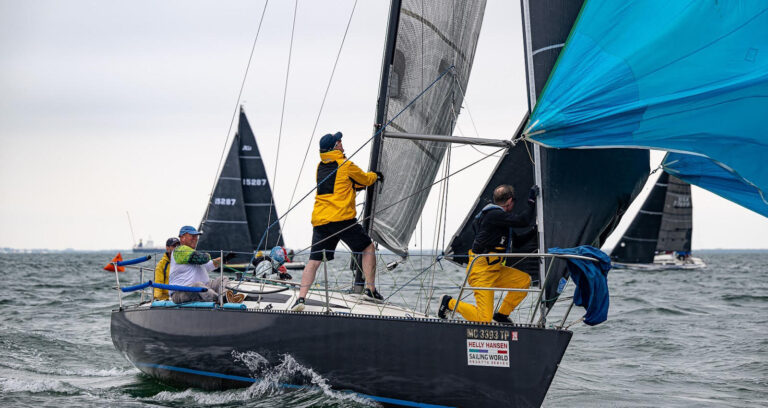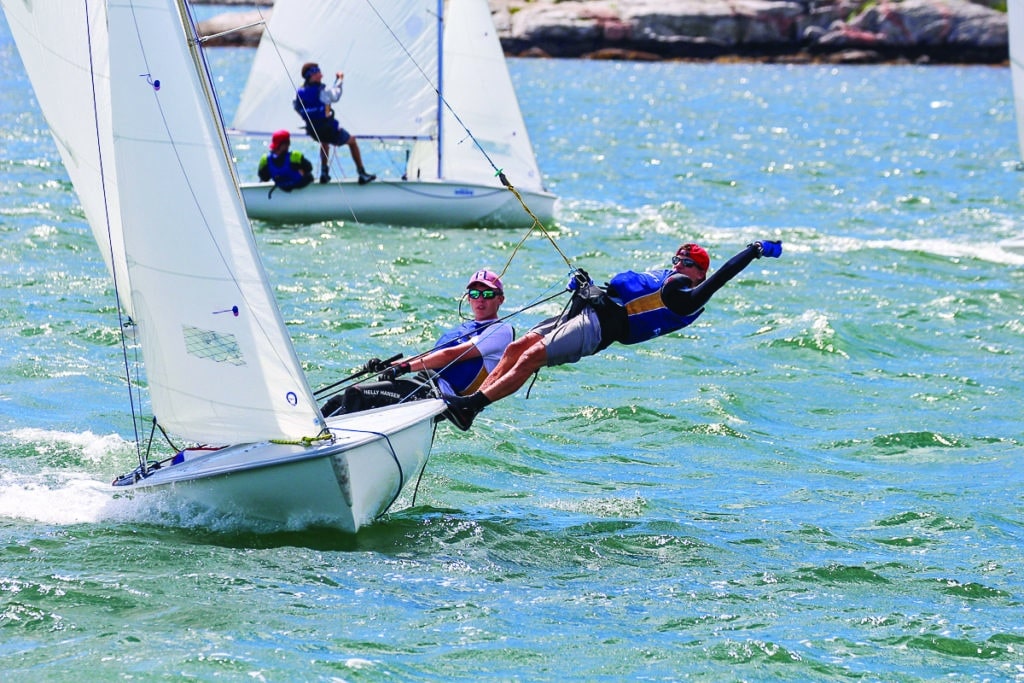
In the days before the Secor Volvo Fishers Island Sound Race, a one-day multileg distance youth race in Club 420s, we studied the weather as if it were our job. Connecticut’s Fishers Island Sound is notoriously calm in August, with the current often moving faster than the wind, but SailFlow was forecasting winds in the lower 20s with gusts to 30 — exactly the conditions my skipper and I prefer.
Zach Champney and I had sailed the race’s first edition in 2015, so we had a sense of how it would go, but at the skippers meeting, the organizer, Brandon Flack, gave us a lot more detail, reviewing the specific course options for each leg and reminding us of the navigational hazards we might run into: rocks, reefs and bigger boats. The courses would only be announced before the start, giving the race committee flexibility to set the course based on conditions. If we didn’t have plans A, B and C figured out, we could run into trouble.
Even though the race was through familiar waters, we had to study the charts because missing a navigational mark would cost us the entire race. It had happened to sailors before, and we wanted to be sure it didn’t happen to us.
The morning of the race was bright and clear, with a steady 15-knot southwesterly wind. We were confident our boat was rigged and tuned just the way we wanted it. As other teams around were discussing how to pin their stays, Zach and I were planning strategies. The first leg, from Wadawanuck YC to Mason’s Island YC, would start inside the Stonington Harbor breakwater.
What surprised us was the number of spectator boats. One of the first ones we saw — or heard, actually — was a big group of little kids from Wadawanuck, cheering for Zach, their sailing instructor. There were dozens of powerboats filled with parents taking pictures and cheering. We even had the Coast Guard show up to see us off — that was cool.
We were taking it all in while the committee set the course, and before we knew it, we were starting the first leg, a 2-mile beat. We had a so-so start but managed to be the fifth boat around the offset mark. We tacked immediately toward the breakwater and were able to find current relief and flatter water. Most of the fleet sailed into deeper water in search of better wind. After a 2-mile upwind beat, we rounded Nun 6 and made our way to the finish line near Mason’s Island, less than a half boatlength behind the leg winner.
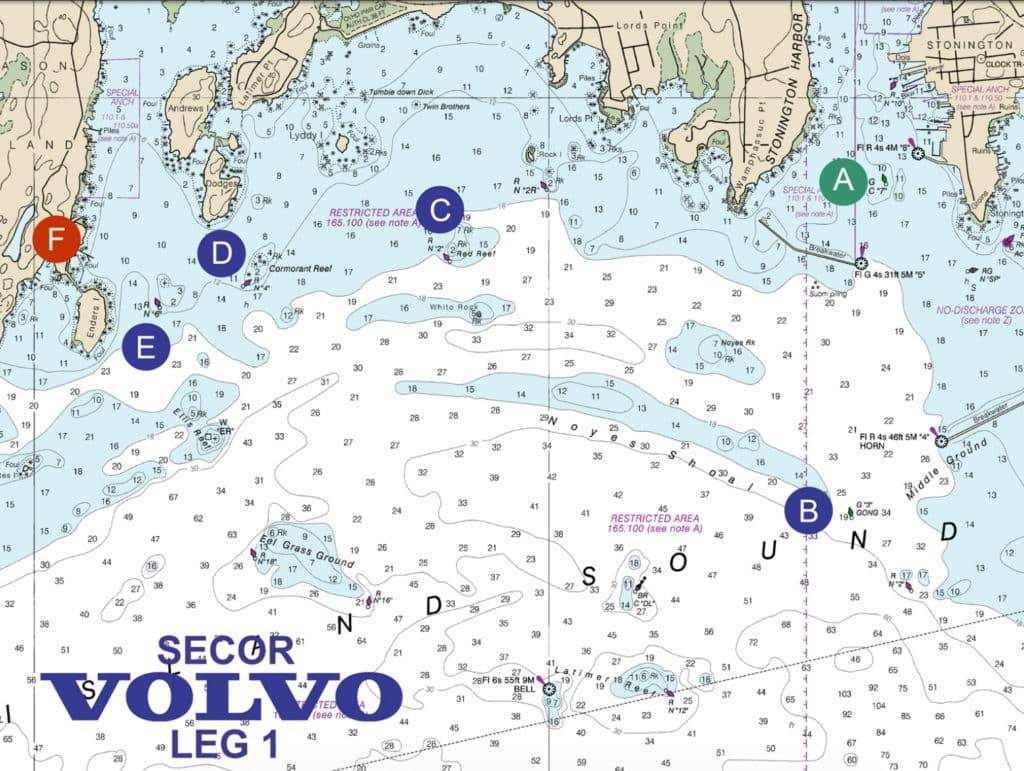
Leg 2 was the one we were looking forward to most. It was a sprint leg, a short run to Ram Island YC. We prefer longer courses, but we were excited because we were headed to our home yacht club. Though it was the shortest leg, it was also the most technical. So many things could go wrong, especially with a downwind start. There are funky currents, and commercial shipping traffic on the Mystic River wouldn’t stop for us.
We were ready at the start, with a good position on the line, and decided to go big and start with the spinnaker flying. As soon as we crossed the line, the wind shifted, making it a tight reach, forcing us to douse our spinnaker and salvage what had turned into an abysmal start.
Nearly the entire fleet sailed past, but instead of panicking, we knew we had the home-field advantage. We played the currents and shifts around Enders Island and this time finished a boatlength behind the winning boat.
After a lunch break, we headed back out to what was sure to be the most exciting leg: Ram Island to Watch Hill, Rhode Island — nearly 4 miles of downwind sailing. We have a lot of confidence in our downwind boathandling skills, and with two strong finishes under our belt, we decided we would sail this leg more conservatively. We set up for a clear-air start, and while a few boats went low, sailing a direct course, most of the fleet sailed high angles. We were having a fast and fun ride before panic set in: We couldn’t find the finish boat. We tried to stay calm and doused the spinnaker before heading to where I thought it should be. After what felt like eternity, but in reality was only a few minutes, we were able to spot the finish boat’s flag. We put the spinnaker back up and sailed as fast as we could. We lost valuable time and our lead, but we finished a few boatlengths behind the winner — so close, yet again.
The final leg, a mile-long sprint, was stressful, as we were already worn down from the long reach leg. We wanted a strong finish and knew our best bet would be to get into the shallow water by the Stonington outer breakwater. We had another terrible start but were the first to tack over to the breakwater, where we found significant current relief. We were first to the mark, rounding just in front of Lawrence Hennessy and Kate Hall. They got ahead of us and match-raced us to the finish, covering us at every tack. It was exciting to come to the finish line, and once again we had a chance to really appreciate what was going on around us: cheers from the spectator boats, the buzz of the drone overhead, and finally, the whistle that marked our successful finish.
We had sailed in so many other venues over the course of the summer: Marblehead, Falmouth, Newport and Buzzards Bay. But while each of these venues had its unique challenges, the Secor Volvo Fishers Island Sound Race had it all. It wasn’t just boatspeed, current relief or race tactics that helped us win the race. It was about balancing all those factors, plus keeping calm when things didn’t go as planned. Without a doubt, it was the best regatta of the year, and we’ll be back to defend. Distance racing in dinghies is highly addictive.

